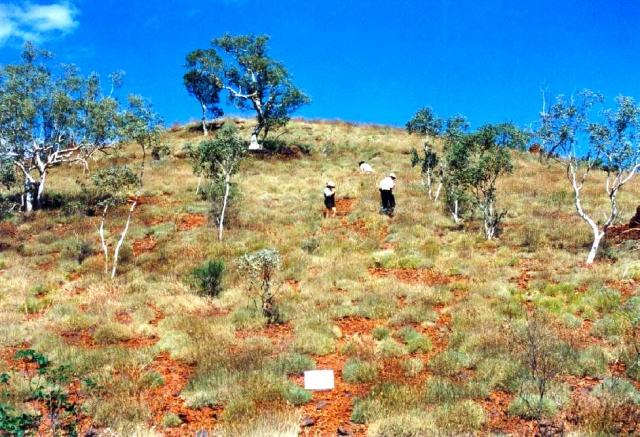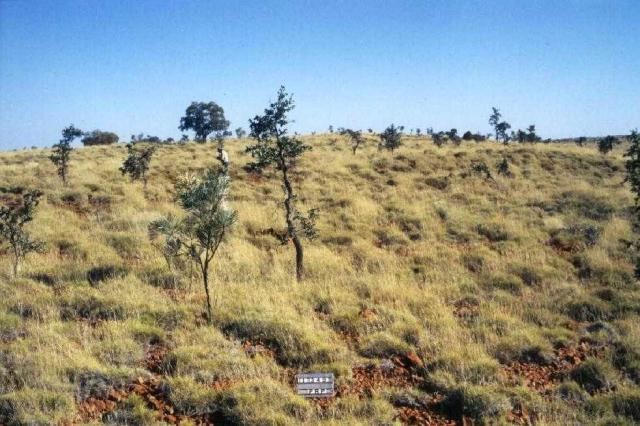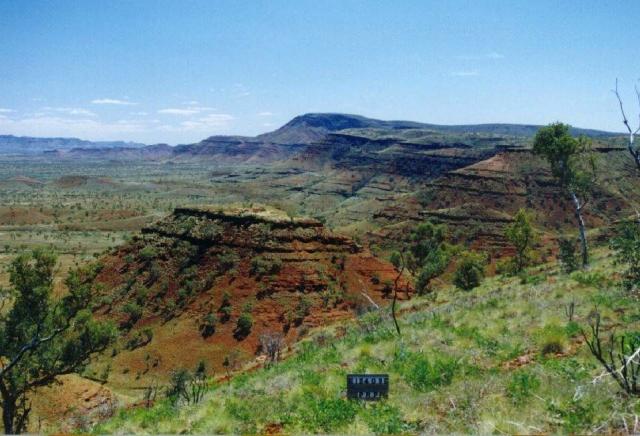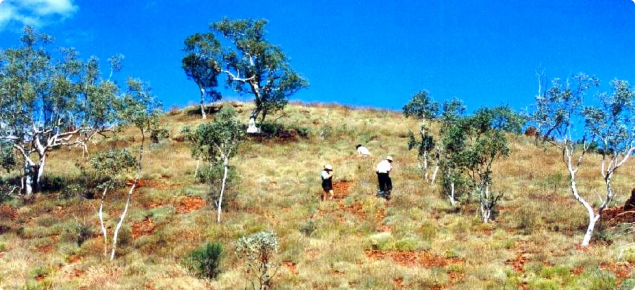Pasture potential
The bulk of spinifex hill pastures are based on hard spinifex, and as such, have no value for pastoralism. This type supports a very few palatable perennial plants at low density and, in many cases, access for livestock is severely restricted by rugged topography.
Those relatively limited areas of spinifex hill pastures based on soft spinifex, and where accessibility is not a problem, have low or very low pastoral value and carrying capacity. Hills and ranges are not favoured by livestock, which appear to graze only the accessible lower slopes in times of forage shortage on more favoured pastures, or for short periods after burning.
This pasture type supports very few palatable species and is largely unaltered by grazing, therefore we have not prepared species lists based on plant responses to grazing.
Suggested levels of use (per annum)
- Hills with soft spinifex: 120 hectares per cattle unit (ha/cu).
- Hills with hard spinifex: 280ha/cu.
Managing spinifex hill pastures in the Pilbara
These pastures are of very little or no use for grazing by stock and there are no management methods that can markedly improve their value for pastoralism. They are subject to fires from lightning strike, accident and from fires spreading from deliberate burning on adjacent plain systems.
Pasture condition
Spinifex hill pastures are largely unaffected by grazing and are all in very good to good condition (Figures 1–3). There is no erosion.



Vegetation structure and composition
Note: scientific names go to the FloraBase species page
These pastures are usually hummock grasslands of various spinifexes with isolated to very scattered trees and shrubs, with projected foliar cover (PFC) of less than 2.5% to 10%. Occasionally, the upper strata may become scattered with PFC up to 20%. Eucalypt trees such as snappy gum (Eucalyptus leucophloia) and Hamersley bloodwood (Corymbia hamersleyana) are common on some hills and ranges of the Newman and McKay land systems.
Other trees include terminalia (Terminalia canescens) and rock fig (Ficus spp.) on some basalt and granitic hills. Kanji (Acacia inaequilatera) occurs extensively as isolated low trees or tall shrubs over many hill systems. Common low or mid height (<2m tall) shrubs include sticky cassia (Senna glutinosa), white cassia (S. glutinosa subsp. xluerssenii), one-leaved indigofera (Indigofera monophylla), tall mulla mulla (Ptilotus calostachyus) and Acacia species.
The ground layer in these pastures are spinifex with a PFC usually in the range of 5–30% depending on such factors as fire history, slope and degree of stoniness. Common but isolated or very patchy companion perennial grasses are lemon scented grass (Cymbopogon ambiguus) and stony wanderrie grass (Eriachne mucronata).
Occurrence
Approximate area 56 730 km2 (29.5% of total).
Spinifex hill pastures are extensive and widespread in the Pilbara. They dominate all of the hills with the notable exception of the basalt hills around Marandoo (Marandoo land system), which support tussock grasses below shrubs. Most hills support various species of hard spinifex (Triodia spp.) but there are also some appreciable hill areas that support soft spinifex (Triodia pungens), e.g. on some parts of the Granitic, Rocklea and Ruth land systems. Soils are skeletal clays and sands with dense stony surface mantles and rock outcrop.
Associated plants
Note: scientific names go to the FloraBase species page.
The main spinifex communities found on hills in the Pilbara are:
Common hard spinifex (Triodia lanigera)
This unpalatable hard spinifex is common on hills and plains. The short-lived herbaceous perennial component after fire within the hill communities is unknown but is most likely less productive than in plain communities.
Limestone spinifex (Triodia wiseana)
Like common hard spinifex, this species occurs widely on both hill and plain land systems. It favours alkaline soils.
Echidna spinifex (Triodia brizoides)
This unpalatable spinifex is found on hills and hill slopes with shallow skeletal soils over parent material such as sandstone and quartzite. After fire, it probably supports very low populations of short-lived perennial herbs and grasses but is of little grazing value.
Soft spinifex (Triodia pungens)
Some hills of basalt, other volcanic rocks, pisolite and shale support both soft and hard spinifex, not usually as mixed stands but as one or other spinifex being locally dominant. As it is not possible to map the distribution of soft spinifex on hills by aerial photo interpretation, this community has been included in with the hard spinifexes in the spinifex hill pasture type. It has a greater production capacity than hard spinifex hills, but is not as good as soft spinifex plain pastures.
Scree soft spinifex (Triodia biflora)
This rare spinifex is found on some scree slopes of the Hamersley Ranges where there are generally no grazing animals. Very little is known about this recently recognised spinifex species. It is of academic rather than pastoral interest.
Other resources
- van Vreeswyk, AM, Leighton, KA, Payne, AL, & Hennig, P 2004, An inventory and condition survey of the Pilbara region, Western Australia, Department of Agriculture and Food, Western Australia, Perth. Technical Bulletin 92.

